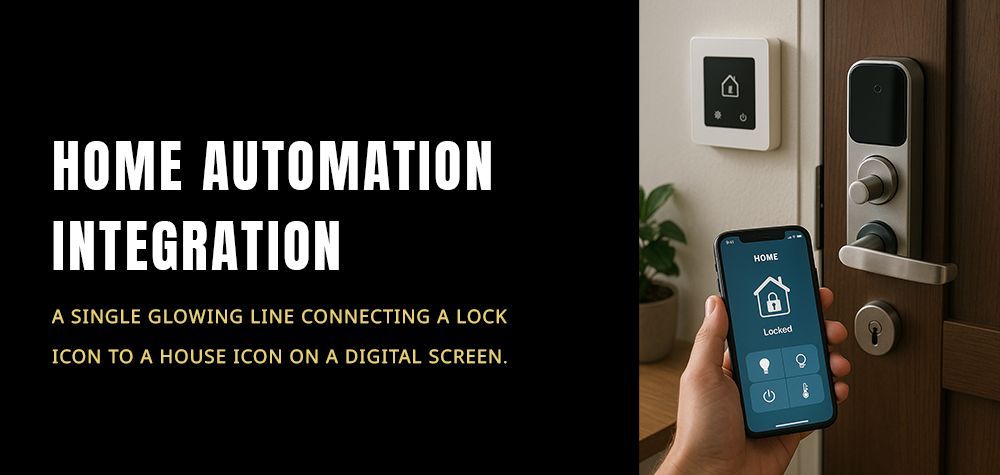The Science Behind Lock Picking and How Locksmiths Use It Legally
Lock picking might sound like something out of a spy movie or a thief’s toolkit, but in reality, it's a precise science that trained locksmiths use daily — and legally. While popular media glamorizes it or paints it as criminal, the truth is far more grounded, technical, and even… respectful.
Let’s break down the fascinating mechanics behind lock picking and explore how locksmiths use this skill not to break in, but to help people out — of lockouts, of bad situations, and sometimes even of serious danger.
"How Often Should a Business Rekey Its Locks?"
What Is Lock Picking, Really?
At its core, lock picking is the art of manipulating a lock’s internal components to unlock it — without the original key. It’s not about brute force or damage. It’s about precision, patience, and deep knowledge of how locks are built.
The locks most commonly picked are pin tumbler locks, found in most home and office doors. The science behind picking them is based on understanding how pins, springs, and cylinders work together to block or allow entry.
How a Standard Pin Tumbler Lock Works
Before we dive into picking, let’s understand what we’re picking.
A pin tumbler lock has five key components:
Key pins: These rest on the bottom and touch the key when inserted.
Driver pins: Sit on top of the key pins, blocking the cylinder from turning.
Springs: Push down the pins.
Plug (or core): The part of the lock that rotates when unlocked.
Shear line: The magical line between the plug and the outer casing. When all pins align at this line, the lock opens.
When the correct key is inserted, each key pin pushes its corresponding driver pin exactly to the shear line. If even one pin is misaligned, the lock stays shut.
So… How Does Lock Picking Work?
Step 1: Inserting Tension
The first tool used is a tension wrench, which applies slight rotational pressure on the lock. This creates a binding effect inside the lock, making it easier to feel which pin is blocking rotation.
Step 2: Manipulating the Pins
Using a lock pick (often shaped like a hook), the picker gently lifts each pin, feeling for subtle clicks and shifts. Each pin set correctly at the shear line allows the plug to move slightly until all pins are aligned.
When that last pin clicks into place, the lock turns — and opens.
This isn’t guesswork or force. It’s a delicate dance between hand, eye, and brain — a perfect example of mechanical knowledge in action.
The Tools of the Trade
Locksmiths don’t carry lock picks because they look cool — they carry them because sometimes there’s no key, no spare, and no access.
Common tools include:
Hook picks: For single-pin picking.
Rake picks: For faster manipulation using scrubbing motions.
Tension wrenches: Apply rotation while picking.
Bump keys and key extractors: Used in specialized situations.
But the tool isn’t what opens the lock — it’s the technique. Without training, even the best tools are useless.
"What to Do If You’ve Lost All Keys to Your Car"
Why Locksmiths Learn Lock Picking (Legally!)
Now let’s address the elephant in the room: Isn’t lock picking illegal?
Not at all — when used properly.
Licensed locksmiths use lock picking as a legal tool to:
Help people locked out of their homes or cars
Open malfunctioning safes or commercial locks
Access doors when keys are lost, stolen, or broken
Provide emergency assistance during home or office lockouts
In most countries and states, locksmiths must be licensed, background-checked, and certified to carry and use lock picking tools. They undergo training that includes not only technical skills but also ethical responsibility.
So yes — locksmiths pick locks. But they do it legally, ethically, and for all the right reasons.
Legal Regulations: Who Can Pick a Lock?
The legality of owning or using lock picking tools depends on where you live. Here's the general overview:
In the United States, owning lock picks is legal in most states — unless intent to commit a crime can be proven.
In Canada and the UK, similar rules apply: possession isn't illegal, but using them criminally is.
In Pakistan and South Asia, locksmiths generally operate under informal systems, but professional locksmith businesses (like yours) follow customer consent protocols and police-reporting standards in suspicious cases.
Locksmiths are always expected to verify ownership before unlocking anything.
That’s why professional locksmiths ask for ID, ownership proof, or sometimes even require police presence — especially in high-risk or late-night calls.\
Real-Life Scenarios Where Lock Picking Saves the Day
Let’s move away from the theory and into the real world.
A Child Locked Inside
A panicked parent calls — their toddler has locked themselves inside a bedroom. Time is of the essence. A locksmith uses a hook pick and tension wrench to gain entry within minutes, without damaging the door.
A Midnight Car Lockout
You’re in a dimly lit parking lot, keys sitting on the car seat. The locksmith shows up, picks the door lock, and hands you your keys — no smashed window required.
A Forgotten Safe Combination
A small business owner forgets their digital safe code. A trained locksmith bypasses the lock, accesses the safe, and resets it — all without destroying it.
In each case, lock picking isn’t about breaking in. It’s about restoring access — quickly, safely, and respectfully.
The Difference Between a Locksmith and a Criminal
Here’s where intent comes in.
- A criminal uses lock picking to steal or harm.
- A locksmith uses it to help and protect.
The skill is the same. The ethics, legal authority, and purpose are what make the difference.
That’s why reputable locksmiths carry licenses, insurance, and are transparent about their work. They’re also accountable — which makes all the difference.
Why You Shouldn’t Try It Yourself
Lock picking may look fun online — even therapeutic in videos. But attempting it on your own locks can:
Void warranties
Damage the lock mechanism
Leave your property vulnerable
Raise legal questions if you're found carrying tools without good reason
More importantly, it undermines the professionalism of the trade.
Let the pros do what they’re trained to do — open doors, not trouble.
Conclusion: The Science Is Real — And So Is the Trust
Lock picking is a blend of engineering, mechanics, and skilled handwork. For locksmiths, it’s not a party trick or a shady tool — it’s a vital part of the job.
When used legally and professionally, it opens doors, solves emergencies, and restores safety. It requires trust, licensing, and respect for both the tools and the people served.
So the next time you see a locksmith skillfully pick a lock, remember: it’s not magic. It’s science, skill, and most of all — service.
Call Us Any Time!





